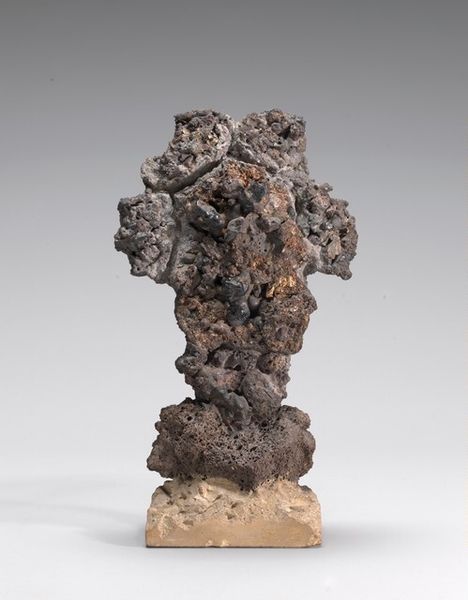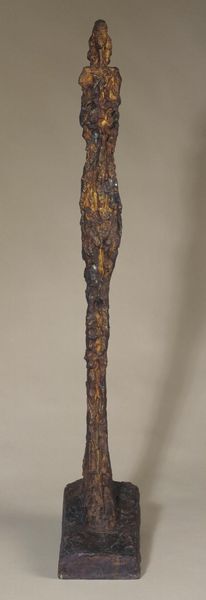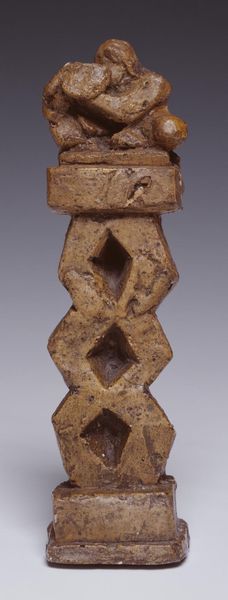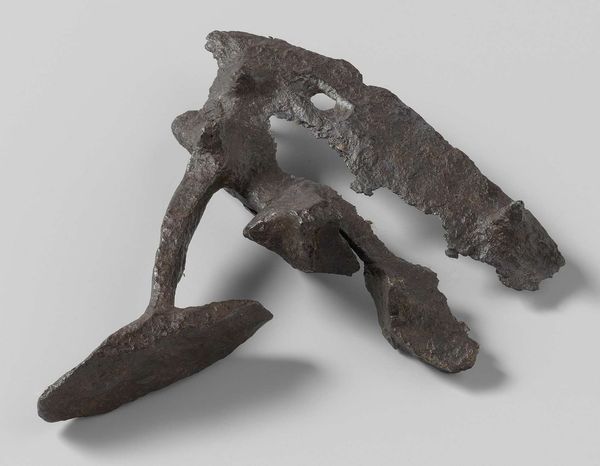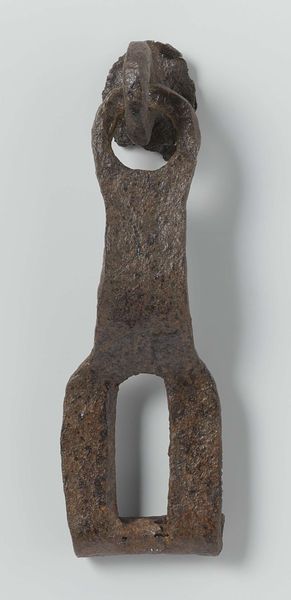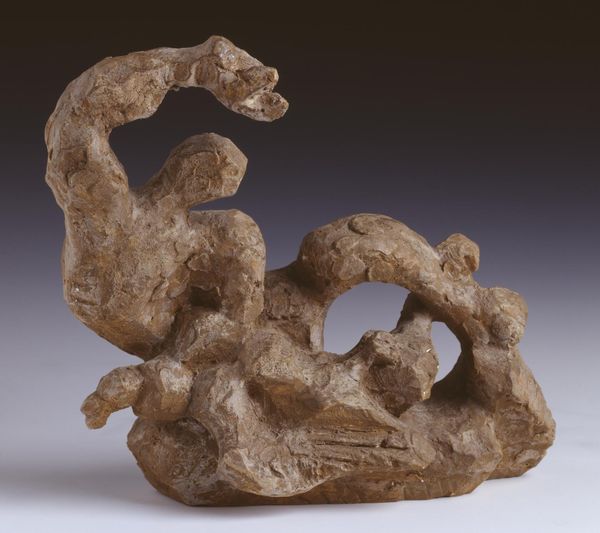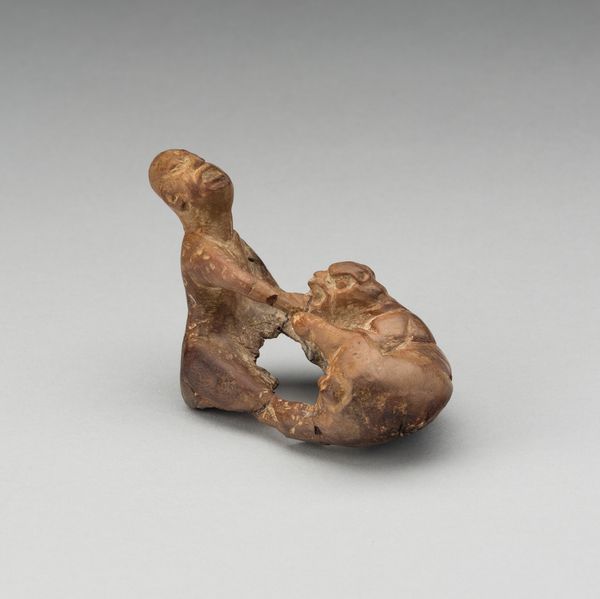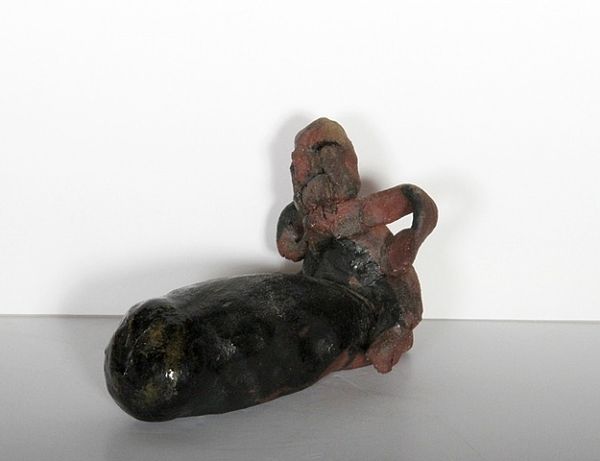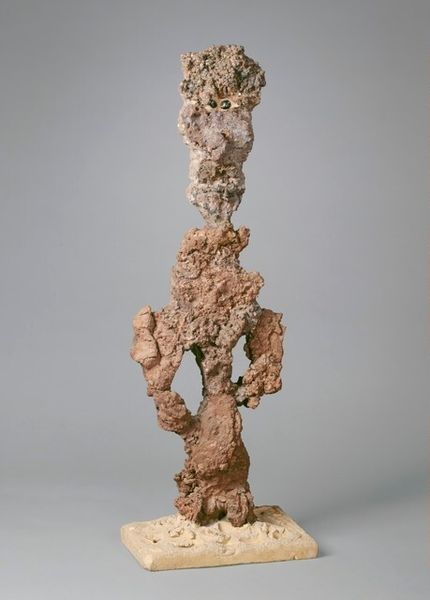
metal, found-object, sculpture
#
abstract-expressionism
#
metal
#
stone
#
sculpture
#
found-object
#
sculpture
#
abstraction
Copyright: Fabio de Sanctis,Fair Use
Curator: We're standing before an untitled sculpture created in 1958 by Fabio de Sanctis. It's crafted from metal and found objects, exhibiting the qualities of Abstract Expressionism. Editor: My initial impression is that it evokes a feeling of decay or something being eaten away, despite the rigid materiality of the metal. There’s a tension between solidity and disintegration here. Curator: The artist's employment of found objects in his sculpture emphasizes how ordinary items are transfigured via artistic intervention, which subverts the dichotomy between art and quotidian experience. Think of it within the context of post-war artistic production and new possibilities in material experimentation. Editor: Exactly. I am curious as to how the found object's nature informs meaning-making and whether the act of scavenging these items reflects the spirit of resourcefulness during that period. Curator: That's astute, because Abstract Expressionism frequently seeks to engage collective emotions, it transcends a mere historical event, thus speaking to us about larger human realities that remain with us. We cannot ignore its primordial nature that invokes primordial sentiments, thus prompting an emotional and visceral reaction from viewers through its sheer physicality. Editor: Yes, there is something evocative about how the shapes appear accidental but convey a clear aesthetic choice with respect to process. How it was crafted, molded, joined, and weathered contributes equally as its final appearance. The way it manipulates both shape and the meaning of form—very compelling, even now. Curator: The lack of obvious narrative direction emphasizes the need for viewers to make associations. The iconography and metaphors evoked can take on various meanings. What do you take away as the prevailing theme or association after our exchange? Editor: Considering de Sanctis' utilization of pre-existing items in construction, it forces reflection regarding industrial society as well. As a cultural artefact, metal has meaning outside of its substance qualities in manufacturing contexts and questions surrounding originality. The materials make more sense when we consider cultural, socioeconomic context. Curator: I leave with fresh perceptions on this item—thanks. You've altered my perception regarding not just form and significance but how the work echoes the socio-historical narrative of development. Editor: Always a delight to delve more deeply! Thanks to these conversations, art history avoids feeling so far from us and instead allows for insights.
Comments
No comments
Be the first to comment and join the conversation on the ultimate creative platform.
